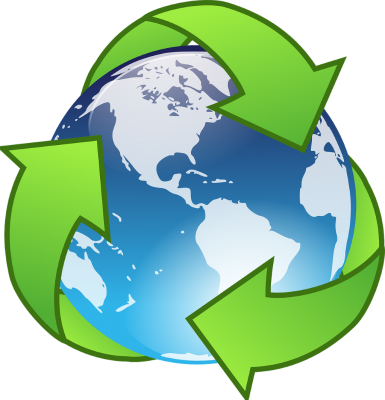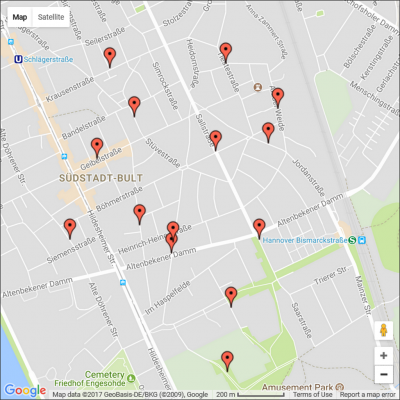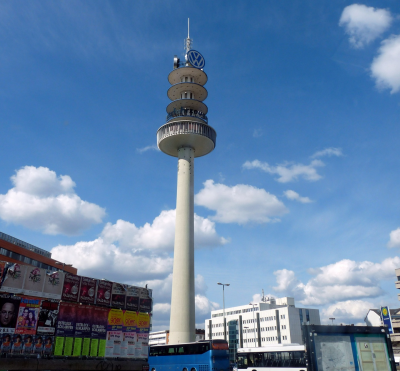In 2015 local residents in the German federal land of Lower Saxony collected between 10 and 37 kg of waste glass each. In the small city of Osterode, they recycled 37 kg whilst for some reason residents in the district of Vechta only managed 10 kg each – must try harder Vechta. Source: National Statistics Office (LSN) https://www.statistik.niedersachsen.de.
In this article, we’ll just focus on the city of Hanover and it’s urban hinterland. In 2014, 24,283 tons (24,283,000 kg) of waste glass was collected for recycling. This corresponds to approximately 22kg per resident. Source: Aha, the local recycling company for region Hanover. https://www.aha-region.de/
The region is already 2 kg behind the average of the district of Lower Saxony and 11 kg behind the small city of Osterode; just think what could be possible if the people of Hanover were somehow able to match their super green friends over in Osterode.
The mean annual price for recycled glass increased from €36.2 per 1000 kg in 2000 to €48.3 in 2008 and subsequently decreased to €45.3 per 1000 kg in 2011. Source: Eurostat. http://ec.europa.eu/eurostat/home
If Hanover was able to persuade its residents to increase the amount of glass that they recycled by just 20% then the city could raise an estimated €220,000 per year. Within five years, it could raise an additional million Euro more.
Some facts on region Hannover:
- Hanover region residents = 1,100,000
- Hanover city residents = 523,000
- Hanover region area = 2,291 km2
- Hanover city area = 204 km2
- Waste collection points (waste glass, paper, old clothes) = 660
A waste collection point is a combination of at least three containers for waste glass (white, green, brown colour) and two for waste paper and sometimes further containers for old clothes.
Calculated facts:
- One collection point will support 1667 residents
- 660 collection points means an estimated 660 x 5 containers on average = 3300 containers
- Hannover city has 313 waste collection points = 1900 containers
- Approximately half of the inhabitants of the region live in the city of Hannover
Something made the people of Osterode much better at glass recycling than those in the city of Hanover and the city is missing a trick. However, let us see what it would take for the waste collection authorities in Hanover to improve this situation.
If Hanover residents recycled waste glass at the same rate as Osterode people then the trucks retrieving it will need to visit collection points 20% more often. Either that or the city will have to spend 20% more on containers. We can assume that they can save some trips to containers that are not yet full but to do that they will need to know in advance, which these are. And that means sensors. The technology for detecting waste level in a container is well established and practical but to add value to the use case information about each container needs to be captured and transmitted on a regular periodic basis to a central location where the data can be analysed to provide the basis for a collection truck route plan. This means wireless connectivity – a good, reliable, cost-effective, low power, wide area (LPWA) network technology.
Technical needs
Full level sensors at waste glass containers will send one status update message of 10 bytes once per day; some might send once a week depending on use with the location generated by GPS.
In Hannover Suedstadt we can already see 15 waste bin collection points per square kilometre. A dynamic route calculation for the trucks could help to save truck-roll, diesel, wear and tear and depreciation on city assets, as well as free up local authority employees for more productive work.
In addition, an efficient collection service leads to a more pleasant user experience motivating a greater proportion of residents to fall into line with the social benefits of recycling. Nobody likes to visit an overfilled waste glass container.
Two years ago, the volume of the standard domestic waste bins in Germany was reduced. In return, they provided homeowners with free of charge bins for the waste paper. In parallel, a private recycling company offered homeowners another free of charge waste bin for the paper. Waste paper, it seems, is big business – they are competing to get their hands on it! Moreover, each of them run their own trucks to collect it; every second week two trucks arrive in my small dead-end street to collect the waste paper. If two companies are hot to get our waste paper, then it must make sense to collect more paper and glass in the inner city of Hanover.
So let’s consider how each of the primary LPWAN technologies might address this real-world requirement.
NB-IoT
For NB-IoT the one message per day limitation is no problem because it has no duty cycle restriction and is easily able to transmit more data per day. However, the waste bins in Hanover run on a battery. Intelligent design would eliminate unnecessary full level updates or GPS positions. S/W updates over the air are also possible with NB-IoT. We can expect a very high downlink communication speeds at with NB-IoT using a mode called multi-tone to use 12 NB-IoT carriers in parallel
SIGFOX
SIGFOX can do the job. SIGFOX technology offers a maximum of just 6 messages per hour only. In this case, we need one message per day only. However, SIGFOX cannot offer downlink for firmware updates because they are limited to 4 messages in download by 8 bytes only.
LoRaWAN
LoRaWAN can do the job as well. Full level transmissions are uplink only. LoRaWAN does not offer true bi-directional capability and upload and download are on simply old Aloha protocol without Listen before Talk. A high package loss can be expected. LoRaWAN offers no broadcast capability. All nodes need to be connected on a case by case basis. The LoRaWAN network will be busy with downloads during an end device downlink transmission and not able to receive any uplink message from any node during an SW update. LoRaWAN cannot receive a message during transmit; it offers half duplex only. Firmware updates in the field are not possible.
Weightless
Weightless technology uses TDMA with listen-before-talk (LBT) and Frequency Hopping. LBT and Frequency Hopping mean that Weightless has no limitation on duty cycle. It is like LoRaWAN on the licensed free band. You will save the subscription fee for the SIM card of euro 2 for 3300 waste containers per year.
Internet of Things Case Study – Smart Waste Bins – “Telemoritz” in Hanover
Let us now turn our attention to an example deployment in a typical small to medium sized German city like Hanover. Weightless will avoid the subscription fee required for a connection to a SIGFOX or NB-IoT network. Moreover, Weightless avoids the subscription fee for other devices in a smart city like smart parking or street light.
Hannover has an area of only 204 square kilometres. The TV tower called Telemax is 282 metre high (https://de.wikipedia.org/wiki/Telemax). The old TV tower called Telemortix is 141 meter high (https://de.wikipedia.org/wiki/VW-Tower). One Weightless gateway could cover all waste bins in the inner city.
However, the wider urban hinterland around Hanover has a size of 2,291 square kilometres. For this reason, a hybrid public and private network service provision make sense. In small cities one Weightless gateway will be enough to cover the whole city whist waste bins in small villages around the larger cities, a smaller number of households that might not be able to justify their own network could be covered by NB-IoT.
Weightless technology also offers true bi-directional communications capability-enabling FOTA because, in addition, Weightless uses time division duplex. TDD enables both uplink and downlink transmissions using the same channels to avoid package loss.
Conclusion
The winner for this waste container example is Weightless technology, followed by NB-IoT or a combination of Weightless and NB-IoT. SIGFOX technology and LoRaWAN are okay if the operator is happy to accept the risk of a deployment that is not future-proofed with a firmware upgrade capability. Maybe recycling collection points do not constitute critical infrastructure, at least from a security point of view so firmware upgrades are not as important in this use case as they would be in, for example, a traffic management application. And 3000 end devices located in positions that are routinely visited on a weekly basis are not impossible to upgrade manually. Whereas end devices in less convenient locations, or in cases where there are considerably more end devices in a network could certainly not be economically serviced by regular physical visits to upgrade software.
Further Internet of Things Case Studies:
Street-light: http://www.gsm-modem.de/M2M/m2m-componets/internet-of-things-case-study-street-lights/
Smart parking: http://www.gsm-modem.de/M2M/m2m-apps/iot-case-study-smart-parking/
If you are interested in Weightless, NB-IoT, SIGFOX, LoRaWAN or any other wireless technology then do not hesitate to ask for wireless modules and antennas by email to harald.naumann (at) lte-modem.com.



2 Comments
Add a Comment